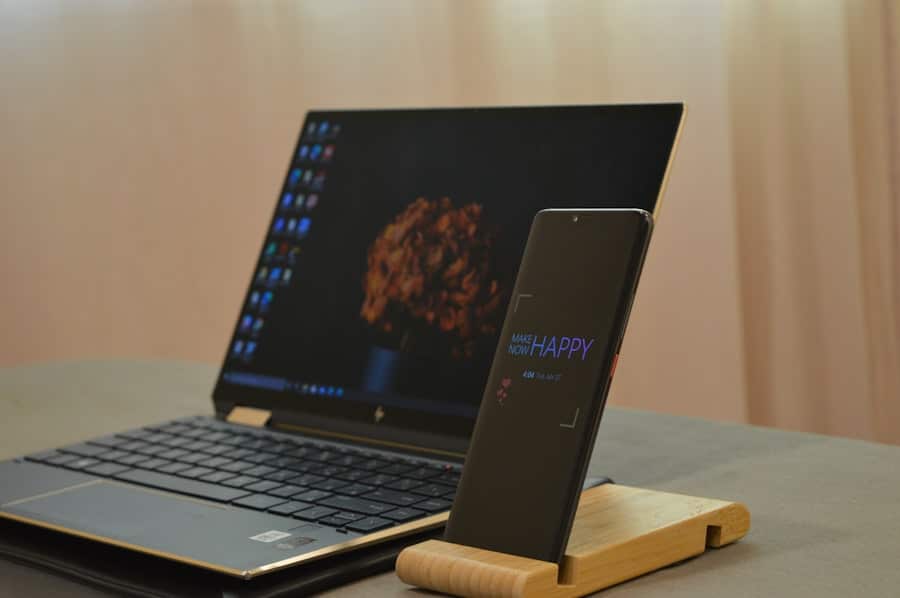The concept of augmented classroom labs represents a transformative shift in educational environments, merging traditional learning with advanced technological tools. These labs are designed to enhance the educational experience by integrating digital resources, interactive elements, and collaborative opportunities that extend beyond the confines of conventional classrooms. The integration of augmented reality (AR), virtual reality (VR), and other immersive technologies allows students to engage with content in a more dynamic and interactive manner.
This evolution is not merely about adding technology for technology’s sake; it is about creating an enriched learning atmosphere that fosters creativity, critical thinking, and problem-solving skills. In an augmented classroom lab, students can explore complex scientific concepts through simulations, visualize historical events through immersive experiences, or collaborate on projects in real-time with peers from around the globe. This environment encourages active participation and deeper understanding, as learners are not just passive recipients of information but active participants in their educational journey.
The role of wireless technology in facilitating these experiences cannot be overstated, as it provides the necessary infrastructure to support seamless connectivity and access to a wealth of digital resources.
Key Takeaways
- Augmented classroom labs integrate digital technology to enhance traditional learning experiences.
- Wireless technology in education enables seamless connectivity and collaboration among students and teachers.
- Benefits of wireless technology in augmented classroom labs include increased flexibility, accessibility, and engagement.
- Examples of wireless technology in action in classroom labs include interactive whiteboards, tablets, and virtual reality headsets.
- Challenges for implementing wireless technology in classroom labs include security concerns and infrastructure limitations.
The Role of Wireless Technology in Education
Enhancing the Educational Experience
The connectivity provided by wireless technology empowers educators to utilize a range of digital tools and resources, from online databases to interactive software, ultimately enhancing the overall educational experience.
Fostering Collaboration
Wireless technology also fosters collaboration among students and teachers. By connecting multiple devices to a single network, students can work together on projects in real-time, share resources instantly, and communicate effectively regardless of their physical location.
Personalized Learning Experiences
The flexibility offered by wireless technology allows for personalized learning experiences, as students can access materials tailored to their individual needs and learning styles.
Benefits of Wireless Technology in Augmented Classroom Labs

The benefits of incorporating wireless technology into augmented classroom labs are manifold. One of the most significant advantages is the increased accessibility to information and resources. Students can access a vast array of online materials, including research articles, educational videos, and interactive simulations, all at their fingertips.
Another key benefit is the enhancement of engagement and motivation among students. Traditional teaching methods often struggle to capture the attention of today’s tech-savvy learners.
However, by leveraging wireless technology to create interactive and immersive experiences, educators can significantly increase student engagement. For instance, using AR applications allows students to visualize complex scientific processes or historical events in a way that is both captivating and informative. This heightened engagement can lead to improved retention of information and a deeper understanding of subject matter.
Examples of Wireless Technology in Action in Classroom Labs
Numerous examples illustrate how wireless technology is being effectively utilized in augmented classroom labs across various educational settings. One notable instance is the use of AR applications in science education. For example, platforms like Merge Cube allow students to hold a physical cube that, when viewed through a tablet or smartphone, reveals 3D models of anatomical structures or chemical compounds.
This hands-on approach not only makes learning more interactive but also helps students grasp complex concepts through visualization. In addition to AR applications, collaborative tools such as Google Classroom and Microsoft Teams have revolutionized how students work together on projects. These platforms enable real-time collaboration on documents and presentations, allowing students to contribute ideas and feedback instantaneously.
For instance, a group of students working on a science project can simultaneously edit a shared document while conducting research online, fostering a sense of teamwork and enhancing their collective learning experience.
Challenges and Considerations for Implementing Wireless Technology in Classroom Labs
Despite the numerous advantages of wireless technology in augmented classroom labs, several challenges must be addressed for successful implementation. One significant concern is the issue of digital equity. Not all students have equal access to devices or reliable internet connections at home, which can create disparities in learning opportunities.
Another challenge is the potential for distractions that come with increased connectivity. While wireless technology opens up a world of resources, it also exposes students to social media and other non-educational content that can divert their attention from learning tasks.
Educators must develop strategies to manage these distractions effectively while still allowing students the freedom to explore digital resources. Establishing clear guidelines for device usage during class time can help mitigate this issue while promoting responsible digital citizenship.
Best Practices for Integrating Wireless Technology in Classroom Labs

Professional Development for Teachers
Educators need training not only on how to use specific technologies but also on how to incorporate them into their teaching strategies effectively. Workshops and ongoing support can empower teachers to feel confident in utilizing wireless tools to enhance their lessons.
Structured Framework for Technology Use
Creating a structured framework for technology use within the classroom can help maintain focus and engagement. Establishing clear objectives for each lesson that align with the use of technology ensures that devices serve a purpose rather than becoming mere distractions.
Guidelines for Effective Technology Use
For example, if students are using tablets for research during a project-based learning activity, teachers should provide specific guidelines on what types of resources are appropriate and how they should be utilized.
Future Trends and Innovations in Wireless Technology for Education
As technology continues to evolve at a rapid pace, several trends are emerging that will shape the future of wireless technology in education. One such trend is the increasing integration of artificial intelligence (AI) into educational tools. AI-powered applications can provide personalized learning experiences by adapting content based on individual student performance and preferences.
This level of customization has the potential to enhance student engagement and improve learning outcomes significantly. Another promising innovation is the development of 5G technology, which offers faster internet speeds and more reliable connections than ever before. The implementation of 5G networks in schools could facilitate seamless access to high-bandwidth applications such as virtual reality simulations or high-definition video streaming without lag or interruptions.
This advancement would further enhance the immersive experiences available in augmented classroom labs, allowing educators to push the boundaries of traditional teaching methods.
The Impact of Wireless Technology on Augmented Classroom Labs
The integration of wireless technology into augmented classroom labs has fundamentally transformed the educational landscape by providing unprecedented access to information and fostering collaborative learning environments. As educators continue to embrace these advancements, they are not only enhancing student engagement but also preparing learners for a future where digital literacy is paramount. While challenges remain in ensuring equitable access and managing distractions, the potential benefits far outweigh these concerns when approached thoughtfully.
As we look ahead, it is clear that wireless technology will play an increasingly vital role in shaping educational practices. With ongoing innovations such as AI integration and advancements in connectivity like 5G, the possibilities for augmented classroom labs are boundless. By harnessing these technologies effectively, educators can create dynamic learning environments that inspire curiosity, creativity, and critical thinking among students—skills that are essential for success in an ever-evolving world.
If you are interested in exploring the world of technology further, you may want to check out The Ultimate Guide to the 6 Best DJ Software for Beginners in 2023. This article provides valuable information on the top DJ software options available for beginners. Just like how wireless technology is revolutionizing classroom labs, DJ software is transforming the music industry by making it easier for aspiring DJs to create and mix music.
FAQs
What is wireless technology?
Wireless technology refers to the use of radio frequency signals to transmit data without the need for physical wired connections. This technology allows for the seamless transfer of information between devices, such as computers, smartphones, and tablets, over short or long distances.
What are augmented classroom labs?
Augmented classroom labs are educational environments that integrate digital technology, such as virtual reality, augmented reality, and interactive simulations, into traditional classroom settings. These labs enhance the learning experience by providing students with hands-on, immersive learning opportunities.
How does wireless technology enable augmented classroom labs?
Wireless technology enables augmented classroom labs by providing the connectivity and infrastructure needed to support digital devices and applications. It allows students and teachers to access and interact with educational content, such as virtual experiments, 3D models, and interactive lessons, without being tethered to a specific location or device.
What are the benefits of using wireless technology in augmented classroom labs?
Using wireless technology in augmented classroom labs offers several benefits, including increased flexibility and mobility, improved access to educational resources, enhanced collaboration and communication, and the ability to create dynamic and interactive learning experiences for students.
What are some examples of wireless technology used in augmented classroom labs?
Examples of wireless technology used in augmented classroom labs include Wi-Fi networks, Bluetooth connectivity, mobile devices, wireless projectors, and virtual reality headsets. These technologies enable students and teachers to engage with digital content and interact with each other in a seamless and efficient manner.

